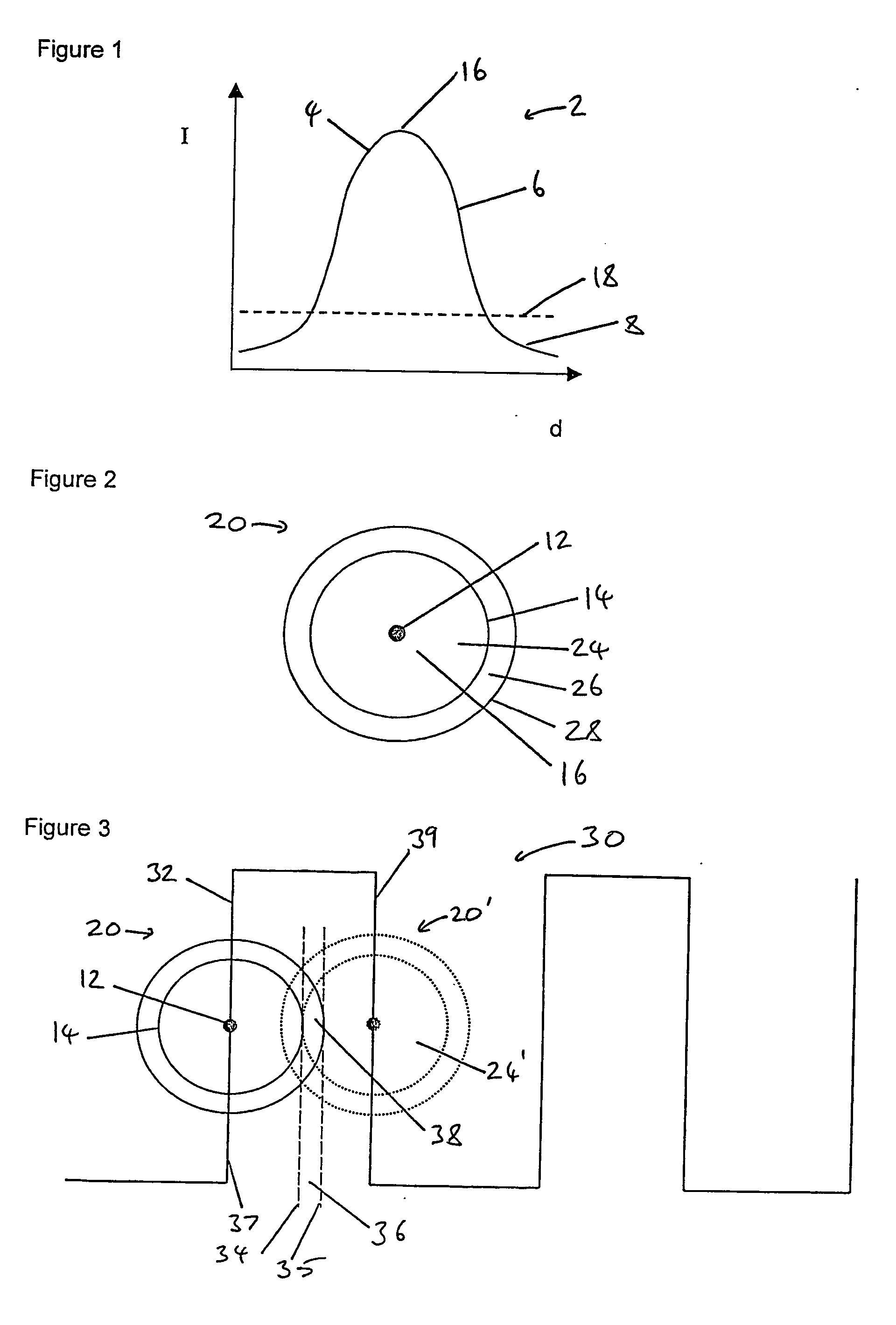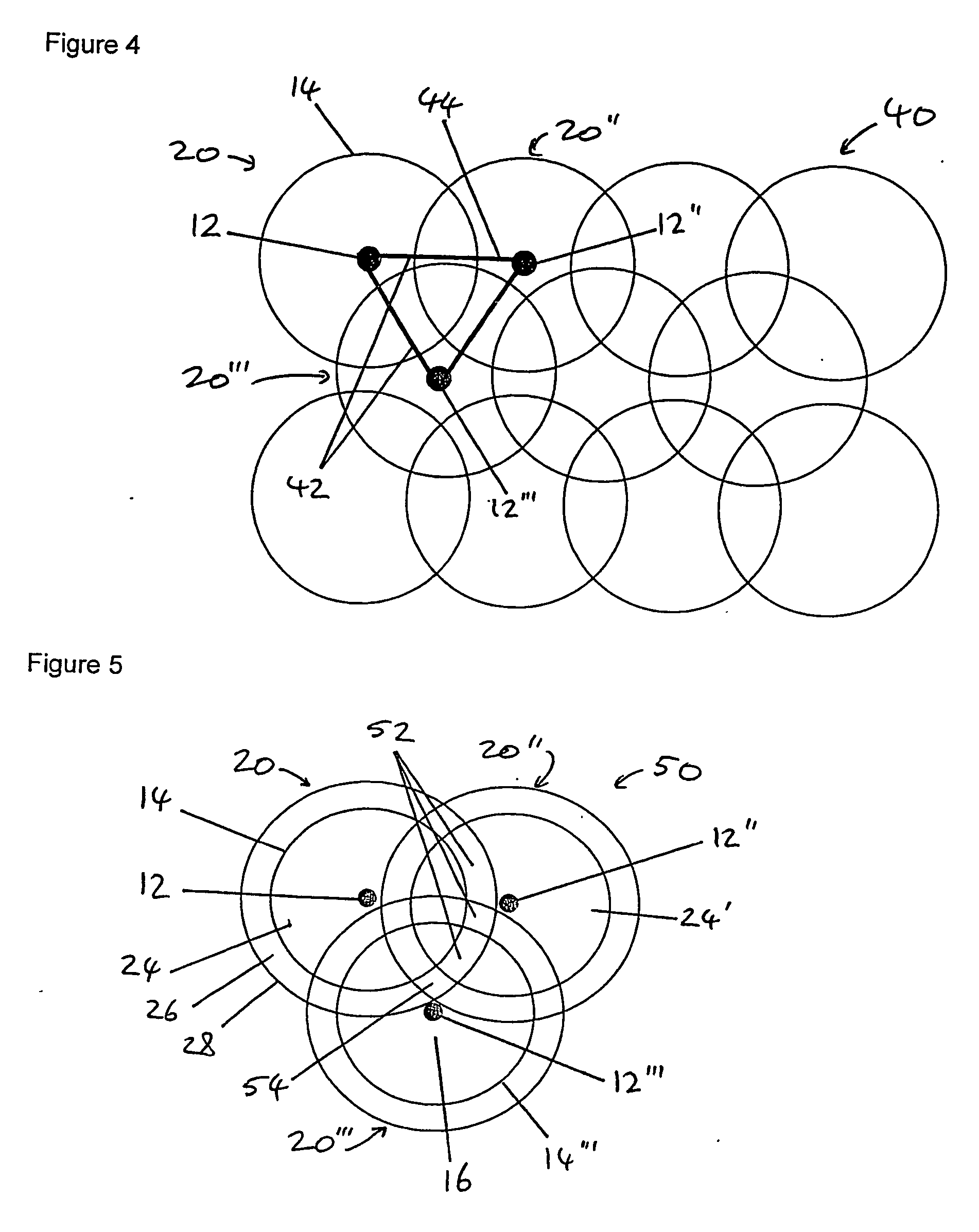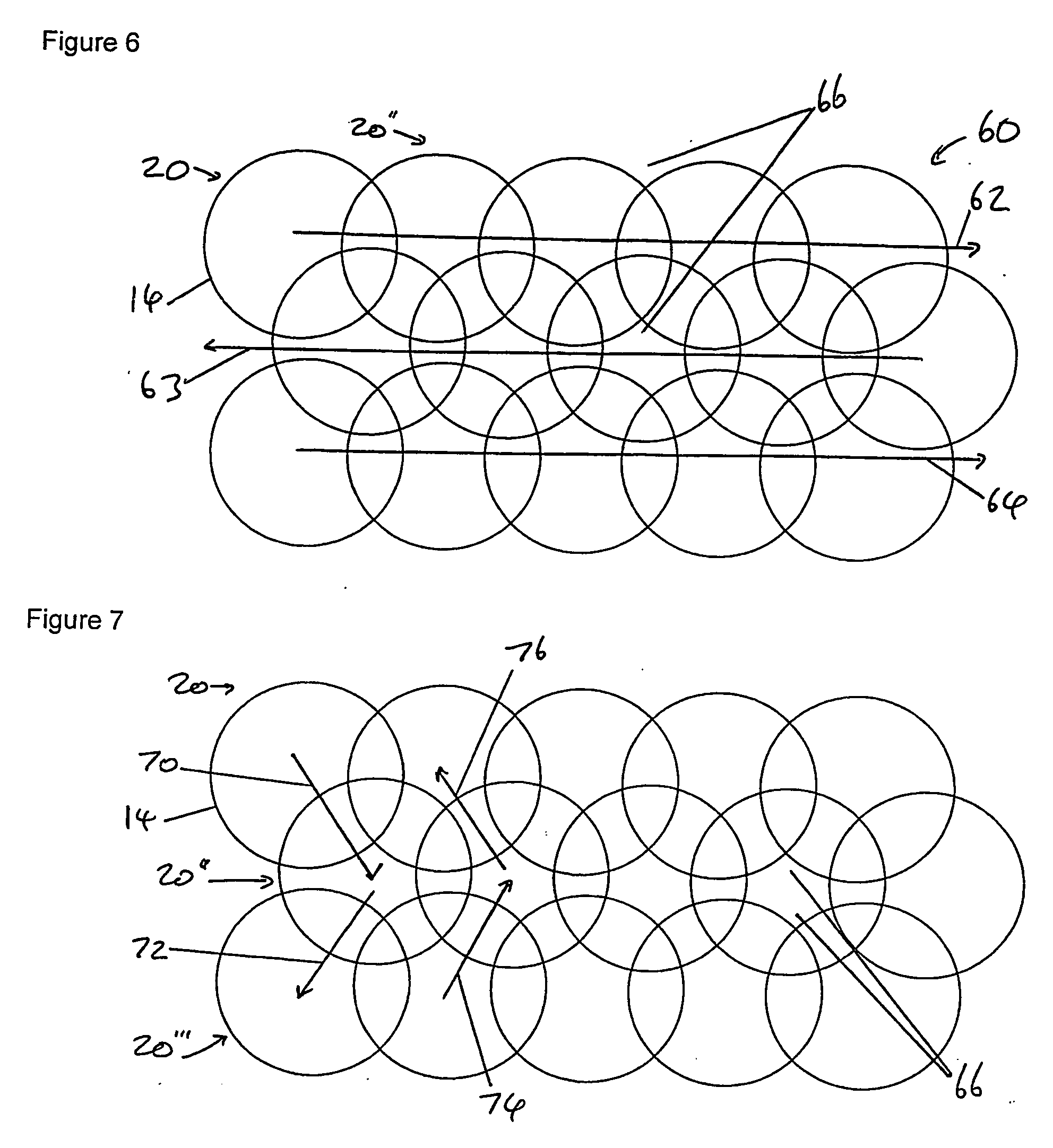Surface treatment of concrete
- Summary
- Abstract
- Description
- Claims
- Application Information
AI Technical Summary
Benefits of technology
Problems solved by technology
Method used
Image
Examples
Embodiment Construction
[0066] A beam of laser light may be non-uniform in power density across a width of the beam. A schematic representation of power density across a laser beam is shown in FIG. 1. FIG. 1 depicts a graph 2 with a y axis of laser power density (I) and an x axis of distance (d) across the beam. The curve 4 describes a quasi-Gaussian type power distribution from which it may be seen that the laser beam has a central area 16 of highest power density. The curve may be divided into two portions, the boundary between being defined by a threshold power density level 18. A portion 6 of the curve 4 above this power density threshold represents part of the laser beam capable of giving rise to scabbling of a surface, the portion 8 below represents an area not capable of giving rise to scabbling of such a surface. However, the low power density portion 8 may give rise to surface modification which makes the surface resistant to scabbling by subsequent passes with a laser beam, even if that subsequen...
PUM
| Property | Measurement | Unit |
|---|---|---|
| Time | aaaaa | aaaaa |
| Time | aaaaa | aaaaa |
| Time | aaaaa | aaaaa |
Abstract
Description
Claims
Application Information
 Login to view more
Login to view more - R&D Engineer
- R&D Manager
- IP Professional
- Industry Leading Data Capabilities
- Powerful AI technology
- Patent DNA Extraction
Browse by: Latest US Patents, China's latest patents, Technical Efficacy Thesaurus, Application Domain, Technology Topic.
© 2024 PatSnap. All rights reserved.Legal|Privacy policy|Modern Slavery Act Transparency Statement|Sitemap



